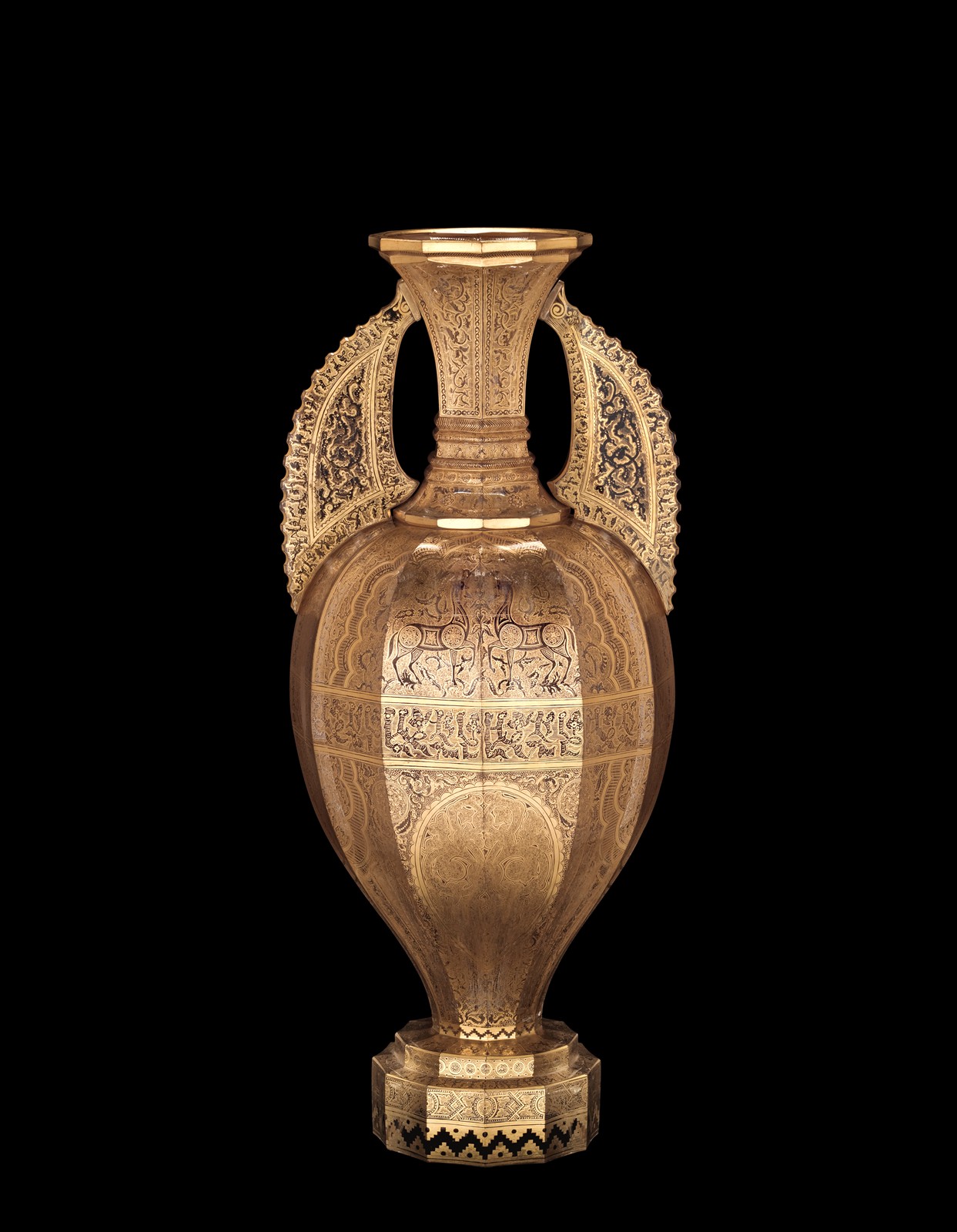This large sculptural piece is modeled after a group of Islamic ceramic vessels found in the Alhambra in Granada, Spain; they are known today as “Alhambra” vases. The quality of the design, the proportions, and the meticulously executed gilding of this glass example suggest an attribution to the Harrach glasshouse, one of the leading fashion-sensitive manufacturers at that time.
The Museum’s “Alhambra” vase was one of three objects illustrated in Waring’s Masterpieces at the International Exhibition, a publication that showed prize-winning displays, including those of the Munich-based retailer Steigerwald, at the London world’s fair of 1862. Frank Steigerwald, head of the firm, was awarded a medal for “excellence of manufacture of cut crystal and ornamental glass.” Despite Steigerwald’s reputation for high quality “manufacturing” (the company had also won medals at the world’s fairs of 1854 and 1855), part of its inventory was produced by Bohemian glasshouses and merely sold by Steigerwald—a common practice among vendors of luxury goods.
The Viennese firms of Lobmeyr and Moser also offered their middle-class clientele objects they retailed rather than produced, including pieces made by the Harrach glassworks. Interestingly, Harrach exhibited a similar Moorish-inspired glass piece at the 1862 exposition, a fact that further supports the attribution of the Museum’s “Alhambra” vase to Harrach.
The Harrach glasshouse’s participation in these world’s fairs provided both exposure to new consumer markets and insight into what competitors were producing and offering. Instead of merely continuing local traditions, Harrach excelled in emulating foreign styles and techniques, and its adopted designs contributed to its international success.

